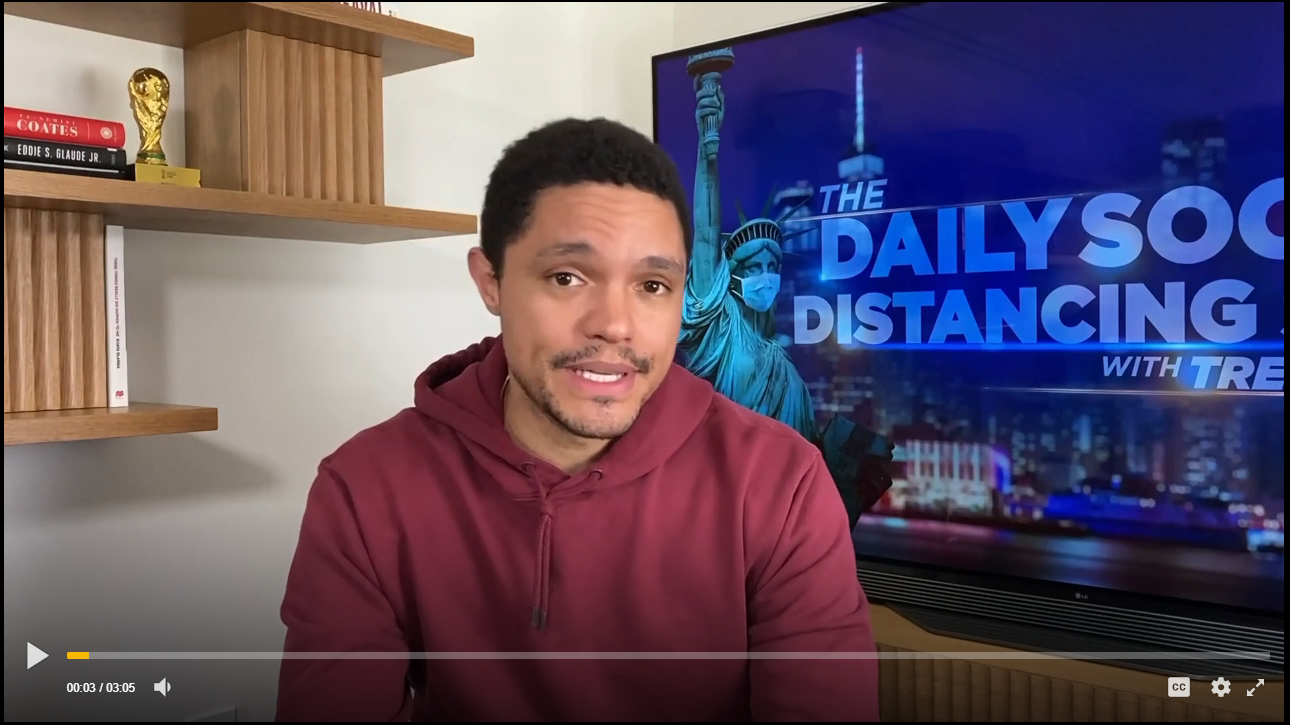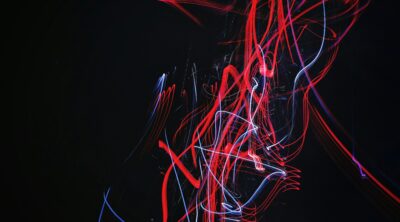< Back to all posts
The Show Must Go On: Remote Broadcasting Like The Daily Show
The swift and captivating sweep of coronavirus COVID-19 has shifted the way in which we live. For about one third of the world’s population, our normal way of living has been shaken. With the shutdown of schools, restaurants, gyms, houses of worship, and workplaces here in the United States, COVID-19 has brought us to a literal stand still.
Many industries have been affected by these changes, including the media industry. And unfortunately for us, it is difficult to continue business as usual when the bulk of our work requires traveling to a destination, shooting on location, and working directly with talent. But when we look at the adjustments that have been made in terms of teleworking, remote producing, and livestreaming, there is hope that our industry will make it through this pandemic stronger than ever. And hopefully, with a greater sense of the technologies that can be used to put forth messaging.
We’ve seen many examples of people in our industry working through these restrictions and lockdowns with the measures I listed above. You may have watched Saturday Night Live at Home or Conan at Home in the last few weeks. But there is one show I’d like to highlight in in this article. This show has found a way to continue to produce its messaging, follow social distancing protocol, and keep some employees working in order to ensure their livelihood: The Daily Social Distancing Show with Trevor Noah (normally called The Daily Show with Trevor Noah).
The Show Must Go On:
Many late-night shows first began making adjustments in response to COVID-19 by reducing the amount of live audience participants. Then they removed a live audience all together, and then went off the air completely. The Daily Show on Comedy Central did so in order to ensure everyone’s safety who works on that show.
But not long after it went off the air, Trevor Noah picked up with the show online – via the show’s social media channels. From its own Facebook page, The Daily Show continued producing and broadcasting humorous critique of current world affairs.
At a time when so many people are staying home, and major sporting events, concerts, and television shows have been canceled, providing a sense of normalcy and humorous entertainment is a necessity.
From His Living Room To Yours
Instead of the polished studio space, the flashy in-studio graphics, and the hysterical laughter that accompanied many of Trevor’s punchlines and impersonations, it is just Trevor. He sits at home in casual clothes, but still delivers the same biting critiques. Gone are the multiple camera angles, in-person correspondents, and special guests.
At first glance, it may have seemed like a last-ditch effort to keep the show running, while showing the audience that everyone at The Daily Show is following self-isolation and social distancing protocols. But when you look a little closer, the show is elevating itself to demonstrate how the media industry can continue to do its work even in these unprecedented times.
Producers, writers, and editors continue to use remote resources to overcome a great challenge to the essence of producing broadcast television. And whether you’re doing remote livestreaming, virtual townhalls, or webcasts, if there’s a will, there’s a way. Here are a few key elements The Daily Show is doing to maintain its brand and produce content, even from home:
1. Noah sits at a table to deliver his monologues: Traditionally, Noah would sit at a “news desk” to deliver his monologues, but a kitchen table works just as well in his videos. You can do the same in your home by using a clean, flat space such as a home office desk, a kitchen counter, a folding table, etc. If you don’t have a nice enough table, sitting on a stool or couch could also work. Getting creative with what you already own can accomplish a similar look or feel to what you would normally have in a set production space, without leaving your home.
2. Simple, non-distracting background: The background of most corporate videos is usually visually interesting, relevant to the subject, and/or blurred out as to not distract from the interviewer or interviewee. Since Noah doesn’t have the luxury of creating a depth of field with the gear he has at home, the background of a wall with a few ornaments or a shelf with limited items, serves the same purpose. When picking a space to deliver your message, select a less cluttered, less personalized area for your background. Adding a few objects that relate to your topic behind you is fine, but less is always more.
3. The inclusion of on-screen graphics: When The Daily Social Distancing Show opens, the original show’s signature logo and music still pop up – but now with the show’s new title. The show’s editors were able to package the video Noah records with their new opening title, lower thirds, headlines for special segments, and a quick closing title sequence. No one needs to break ‘stay at home’ orders to go to an editing suite to accomplish this. The editors can add on these branded elements to create as professional of a look as is possible for an online platform – remotely. Reach out to your editors (or one of ours) to see if they can locate your branded material to spiffy up your videos or have them repurpose it, so it fits the new content you’ve created.
4. The addition of sound bites and news clips: The show’s writers and editors also manage to research and find relevant news clips to edit in between Noah’s talking points. This was done while the show aired on TV and has maintained some of the show’s signature news style. If your videos usually require the use of extra material, such as news clips or b-roll, see if you can find archived footage, stock footage, or still photos (with the proper permissions) that can be used to fill in between bits.
5. Basic editing between close ups and wide shots: While there aren’t multiple cameras to capture various angles of Noah’s new “studio,” the editors are able to cut between wide shots and close ups to emphasize certain points. While staying wide for the general story, there will be a cut in to a closeup of Noah as he drives a particular point home. This adds some shot variety to what a simple one-shot video would otherwise be. Most of us would only be able to manage one camera-equipped device at a time any way (such as a phone, tablet, or webcam etc.) to capture that one angle. But we recommend recording in a wider angle, so the editor can play with the shot sizes in post-production.
6. Split screen phone calls with correspondents and special guests: While it is impossible to have another person in the room with Noah, Noah does have correspondents and special guests on the show by having them call in and appear via split screen. When someone calls in, there’s a quick cut to Noah tapping a phone and accepting the call. Then the person and Noah can both be on screen while they dialogue. It’s an effective way to engage another person on the show without breaking proper social distance. Currently, there are several online platforms, such as Google Hangouts, Microsoft Teams, and Skype that allow you to video chat with other people with ease. Additionally, Zoom even has a feature where you can record a video conversation and play it back later. You could take that video and feature it in a larger piece with your interview and other footage or let that stand as the main interview you want your audience to see. Overall, it’s a great way to incorporate others while isolating at home.
These six methods have allowed The Daily Show to continue broadcasting online, without sacrificing too much on their branding and also adhering to the restrictions of social distancing.
The adjustment to this new way of working and living has been a struggle for many, but it is not insurmountable. The discovery of unique ways to produce and send information to the world has laid the groundwork for new methods of communicating to audiences for the future.
While it appears that this period of COVID-19 will last for several more weeks (perhaps months), it’s a perfect time to think constructively on how to continue to move forward. Take this time to regroup, plan, strategize, and then come up with creative ways to use both current and emerging technologies in these uncertain times. Give Crews Control a call to see how we can help get your messaging out into the world (from the safety of your home).









Leave a Reply